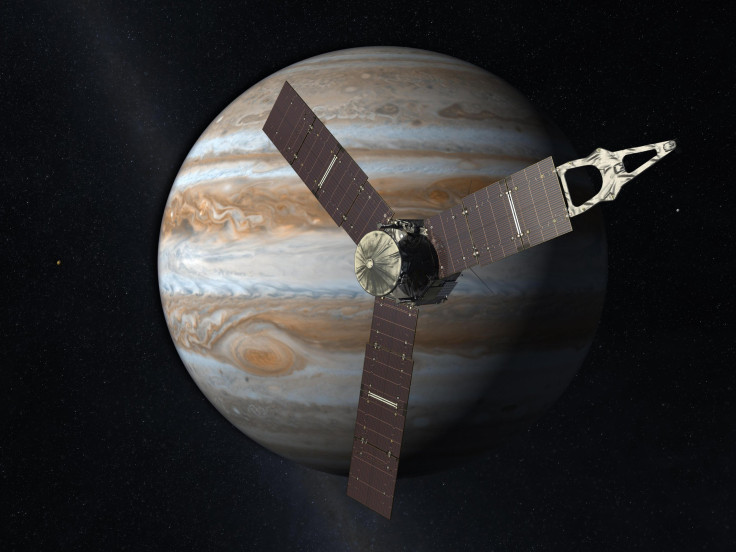NASA's Jupiter-Bound Juno Live Stream: Watch The Space Probe Slingshot Around Earth As It Heads For Jupiter

NASA's Juno space probe has become the fastest man-made object as it slingshot around Earth at approximately 3:21 p.m. EDT, 12: 21 p.m. PDT, on Oct. 9, 2013. Juno is on its way to Jupiter and needed to pick up some speed in order to reach the planet. With some help from Earth's gravity, Juno was able to reach speeds of 25 miles per second, relative to the sun, and a live stream, courtesy of SLOOH, will capture the Jupiter-bound probe as it makes its way around the Earth.
According to SLOOH, an international team of astronomers and observatories, Juno was 347 miles, 559 kilometers, from Earth earlier on Wednesday. The Juno live stream will air from SLOOH's observatory at the Institute of Astrophysics of the Canary Islands. The event will be hosted by astronomer Paul Cox and viewers can ask questions on Twitter using #nasajuno.
Juno was first launched on Aug. 5, 2011 and the slingshot maneuver, or gravity assist, has been in development for two years. By August 2013, Juno was halfway to Jupiter but, as was always part of the plan, needed a boost from Earth in order to reach the planet. At that time, Juno was 9.4 Astronomical Units, AU, or 34.46 million miles from Earth. Juno will reach Jupiter in three years, on July 4, 2016 at 7:29 p.m. PDT, 10:29 p.m. EDT. The space probe will orbit around Jupiter 32 times in one year and is set for a polar orbit and will be the first space craft to orbit over Jupiter's poles. Juno will observe the planet's gravity and magnetic fields as well as the magnetosphere.
At its closest, Juno will be 3,100 miles, 5,000 kilometers, above the cloud tops of the planet. Onboard, Juno will be equipped with several instruments, including two spectrometers, an instrument that measures radio and plasma waves as well as the JunoCam, a color camera that will be used to take photos of Jupiter's poles.
The Juno live stream can be viewed below starting at 9:30 p.m. EDT, 6:30 p.m. PDT.
© Copyright IBTimes 2024. All rights reserved.












